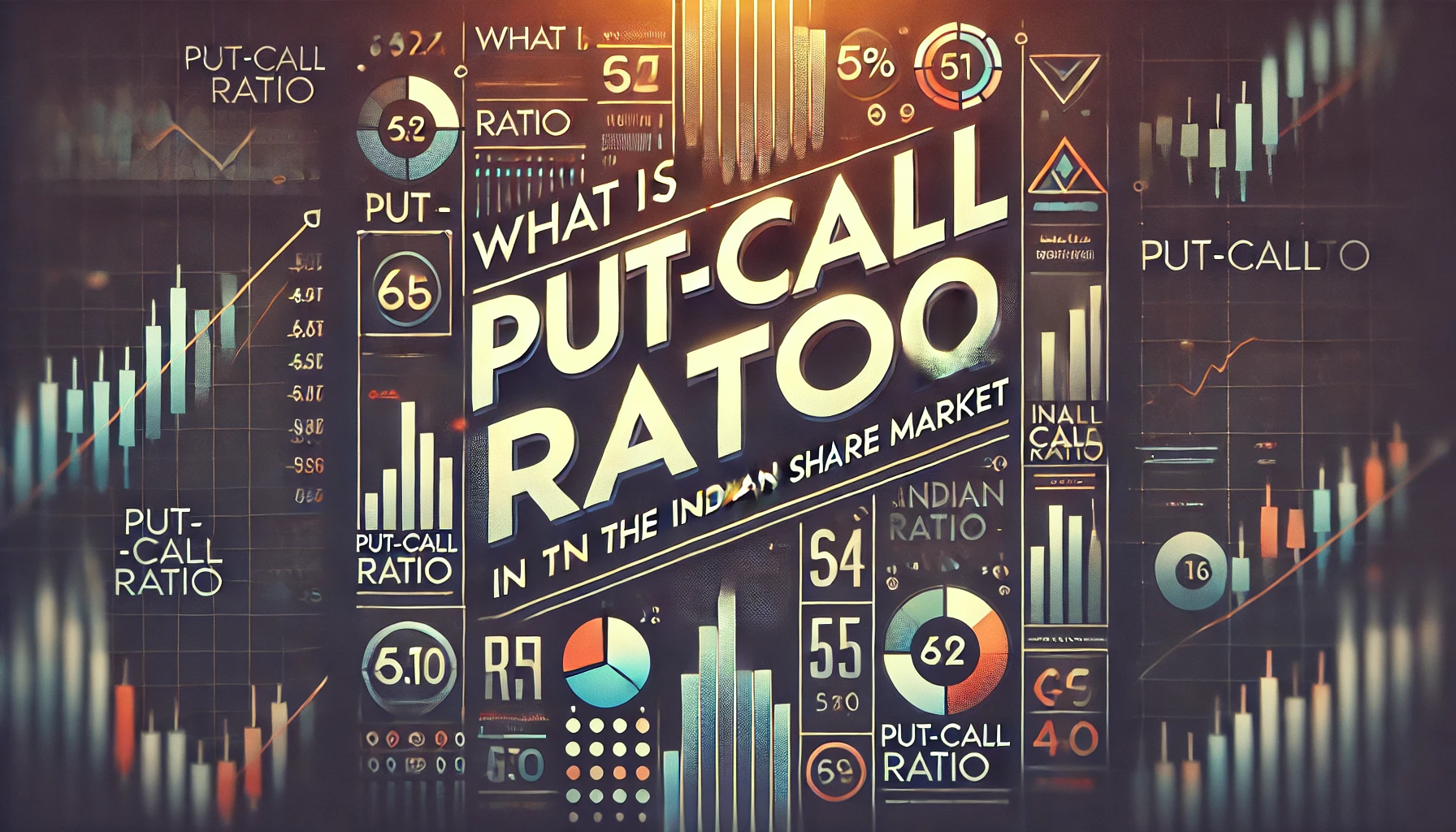In the world of options trading, the credit spread strategy is one of the most effective tools for traders to generate consistent profits with limited risk. This strategy is popular in the Indian share market derivatives as it allows traders to capitalize on the market’s movement while minimizing exposure. By utilizing a combination of buying and selling options contracts, traders can create a position that offers a net credit—essentially being paid upfront to enter the trade.
This blog will explore the fundamentals of the credit spread strategy, its types, how it works in the Indian market, and how traders can implement it to manage risk effectively.
Table of Contents
- Introduction to Credit Spread Strategy
- How Credit Spreads Work
- Types of Credit Spreads
- Bull Put Spread
- Bear Call Spread
- Advantages of Credit Spread Strategy
- Risk and Reward in Credit Spreads
- Historical Data on Credit Spreads in India
- Practical Example: Implementing a Credit Spread in NIFTY Options
- How to Manage Credit Spreads
- Common Mistakes When Trading Credit Spreads
- Conclusion
1. Introduction to Credit Spread Strategy
A credit spread strategy involves selling (writing) one option and buying another option of the same type (either both call options or both put options) but with different strike prices. The net result is that the trader receives a premium for selling the option with the higher premium while paying for the cheaper option. The objective is to generate income through this net credit.
In India, traders often use credit spreads in indices like NIFTY and Bank NIFTY, as well as in individual stocks such as Reliance Industries and Infosys.
2. How Credit Spreads Work
A credit spread is created by simultaneously buying and selling options at different strike prices. The goal is to create a position where the premium received from selling the option is greater than the premium paid for buying the option. This generates a net credit, which the trader keeps if the position remains profitable until expiration.
Example:
Suppose a trader expects NIFTY to stay above 18,000 over the next month. They can sell a put option with a strike price of ₹18,000 and buy a put option with a strike price of ₹17,900. This creates a bull put spread where the trader collects the premium from selling the ₹18,000 put and pays a smaller premium for the ₹17,900 put.
3. Types of Credit Spreads
a. Bull Put Spread
The bull put spread is used when the trader expects the underlying asset’s price to remain above a certain level. The strategy involves selling a put option at a higher strike price and buying a put option at a lower strike price. The maximum profit is the net credit received when the underlying asset stays above the sold put’s strike price.
Table: Example of Bull Put Spread in NIFTY
| Option Strike Price | Sell/Buy | Premium Received/Paid (₹) |
|---|---|---|
| ₹18,000 | Sell | ₹150 |
| ₹17,900 | Buy | ₹100 |
| Net Credit | ₹50 |
b. Bear Call Spread
The bear call spread is used when the trader expects the underlying asset’s price to stay below a certain level. It involves selling a call option at a lower strike price and buying a call option at a higher strike price. The maximum profit occurs when the underlying asset stays below the sold call’s strike price.
4. Advantages of Credit Spread Strategy
Credit spreads offer several advantages for traders, particularly those seeking income generation with controlled risk:
- Limited Risk: Credit spreads limit risk because the long option (the one bought) protects against significant losses from the short option (the one sold).
- Income Generation: The strategy allows traders to collect premium upfront, providing immediate income.
- Defined Profit and Loss: Both the maximum profit and maximum loss are defined when the trade is entered, allowing traders to plan accordingly.
- High Probability of Success: Credit spreads are often structured to profit from time decay, benefiting from options expiring worthless.
5. Risk and Reward in Credit Spreads
The risk and reward in a credit spread are capped, making it a conservative strategy compared to other options strategies. The maximum profit is the net credit received when initiating the spread, while the maximum loss is the difference between the strike prices minus the net credit.
Table: Risk and Reward in Credit Spread
| Option Strike Price | Net Credit (₹) | Maximum Loss (₹) | Maximum Profit (₹) |
|---|---|---|---|
| ₹18,000 – ₹17,900 | ₹50 | ₹50 (difference between strikes – credit) | ₹50 |
6. Historical Data on Credit Spreads in India
Credit spreads have gained popularity in the Indian market due to their ability to manage risk. Below is a table showing the average premiums collected for credit spreads in NIFTY options over the past few years:
Table: Average Premium Collected in NIFTY Credit Spreads (2019-2023)
| Year | Average Premium (₹) |
|---|---|
| 2019 | 60 |
| 2020 | 55 |
| 2021 | 65 |
| 2022 | 70 |
| 2023 | 68 |
This table reflects how credit spreads can provide consistent income over time, especially in a stable market.
7. Practical Example: Implementing a Credit Spread in NIFTY Options
Let’s consider a practical example of implementing a credit spread in the Indian market using NIFTY options.
Example:
- Sell NIFTY 18,000 put option: Receive ₹150 premium.
- Buy NIFTY 17,900 put option: Pay ₹100 premium.
- Net credit: ₹50.
If NIFTY stays above ₹18,000 at expiration, both options expire worthless, and the trader keeps the ₹50 net credit. If NIFTY falls below ₹17,900, the maximum loss is the difference between the strike prices minus the net credit, capped at ₹50.
8. How to Manage Credit Spreads
Managing a credit spread involves monitoring the underlying asset’s price movement and the time to expiration. Here are some common strategies for managing credit spreads:
a. Close the Spread Early:
If the underlying asset is moving toward your breakeven point, you can close the spread early to lock in profits or limit losses.
b. Adjust the Spread:
You can adjust the strike prices or roll the position to a later expiration date if the market conditions change.
c. Let the Spread Expire:
If the underlying asset stays within the expected range, you can let the options expire worthless and keep the full net credit.
9. Common Mistakes When Trading Credit Spreads
While credit spreads offer defined risk and reward, traders often make mistakes that can lead to losses. Here are some common pitfalls:
a. Ignoring Volatility:
Volatility can significantly affect option premiums. Traders should avoid opening credit spreads when volatility is high, as it increases the risk of large price swings.
b. Not Managing Early:
Waiting too long to adjust or close a spread can lead to losses if the underlying asset moves too close to the strike price.
c. Overestimating Expiration:
Many traders hold onto spreads too close to expiration, exposing themselves to risk even when small profits could have been taken earlier.
10. Conclusion
The credit spread strategy is a valuable tool in the Indian share market derivatives for traders looking to generate income with limited risk. By understanding the mechanics of bull put spreads and bear call spreads, traders can take advantage of market conditions to earn a premium while keeping losses capped.
With proper risk management and timely adjustments, credit spreads can be an effective part of a trader’s options strategy. The historical data and examples discussed highlight the consistent income-generating potential of this strategy in the Indian market.

What Is Implied Volatility?
In the realm of Indian share market derivatives, implied volatility (IV) plays a crucial role …

What is Margin Funding?
Margin funding is a powerful tool in the Indian share market that allows traders to …

Forward vs Future contract
In the Indian share market, derivatives such as forward and future contracts play a pivotal …

What is Margin Money?
Margin money is a crucial aspect of trading in the Indian share market, especially in …

What is Put-Call Ratio?
The Put-Call Ratio (PCR) is one of the most widely used indicators in options trading …

What is Derivatives?
Derivatives are financial instruments whose value is derived from an underlying asset or benchmark. In …

What is Cost of Carry?
The cost of carry is an essential concept in futures trading that reflects the cost …

What is futures
Futures are a fundamental part of derivatives trading in the Indian stock market. They allow …

Bullish Option Strategies
In the ever-evolving world of derivatives trading, options have become a powerful tool for investors …

Understanding Physical Settlement in Futures & Options Contracts: A Comprehensive Guide
In the world of derivatives trading, the concept of physical settlement has gained prominence, particularly …

what are call options
The Indian share market has expanded significantly over the years, attracting a growing number of …

What Is Credit Spread Strategy
In the world of options trading, the credit spread strategy is one of the most …

What Is a Forward Contract
A forward contract is a customized financial agreement between two parties to buy or sell …

Types of Derivatives in India
The Indian derivatives market has grown exponentially, becoming a vital tool for investors and traders …

What is Swaps Derivatives
In the world of derivatives, swaps are a special class of contracts that allow two …

Intrinsic Value and Time Value of Options
Options trading is one of the most widely used financial instruments in the Indian share …

What is Open Interest?
In the world of derivatives, the concept of “Open Interest” plays a crucial role in …

Types of underlying assets in derivatives
The Indian derivatives market has grown exponentially over the last few decades, thanks to its …

derivatives on Option Volatility & Pricing Strategies
The Indian share market derivatives segment is a dynamic environment where advanced traders rely heavily …

What is Futures Contract
The Indian share market offers various financial instruments that provide opportunities for investors and traders. …

What is implied volatility in options?
In the world of options trading, one of the most crucial elements to understand is …

Futures Pricing Formula
The Indian share market is known for its dynamic nature and offers various opportunities for …

What is an ITM Call Option?
The world of options trading is filled with technical terms that are crucial for investors …

What is Max Pain Theory?
The Indian share market is full of strategies and theories that traders use to predict …

What is OTM Call Options
In options trading, terms like “in the money” (ITM), “at the money” (ATM), and “out …

What Is Rollover
Rollover is a common term in the world of futures and derivatives trading, especially in …

Futures Prices Converge Upon Spot Prices
In the world of financial markets, futures contracts play a significant role. One of the …

Call Ratio Back Spread
In the Indian share market, advanced trading strategies such as the Call Ratio Back Spread …

Margin Call Meaning
A margin call is one of the most critical warnings in trading, often marking a …

What is Bermuda Option?
The financial markets are full of complex instruments, and one such tool is the Bermuda …


















